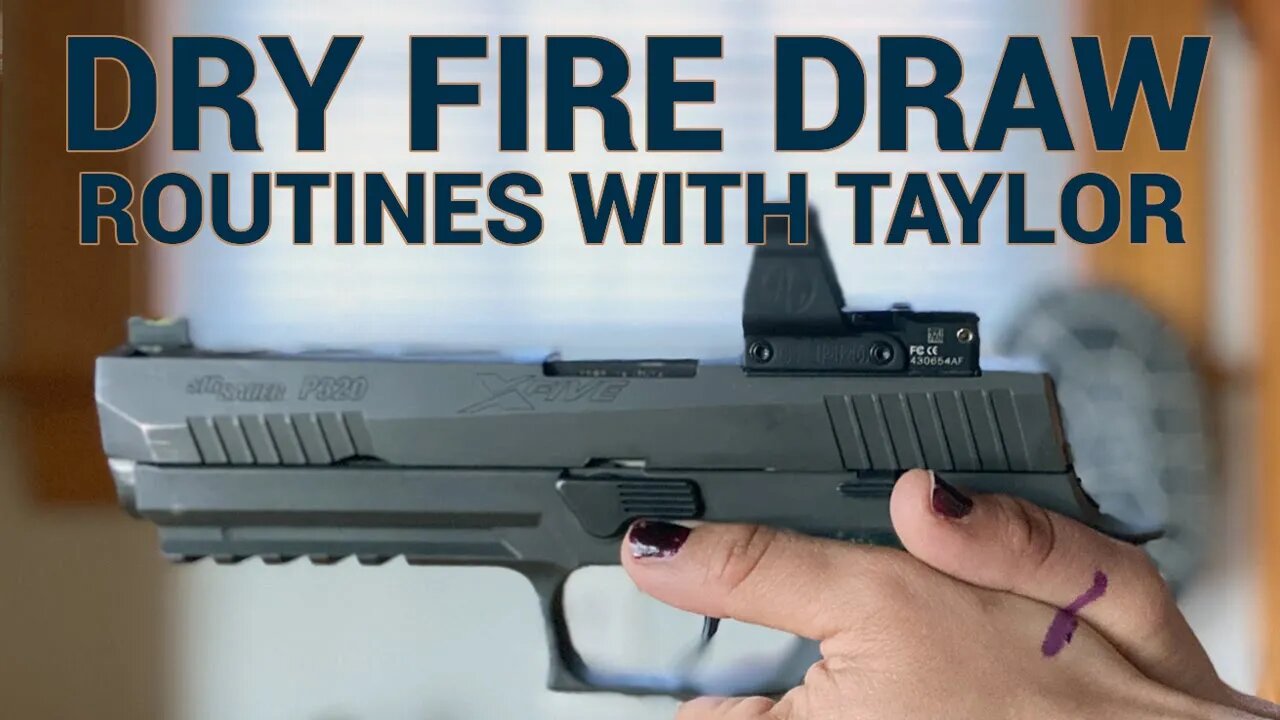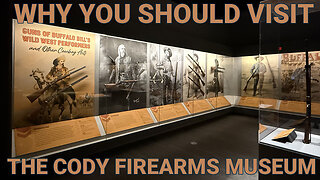Premium Only Content

Dry Fire Draw Routines with Taylor
*Before running any dry fire drills, visually and physically inspect your gun is clear, then clear the area of all live ammunition. *
We’re headed back to the dry fire practice ring to bring you another fun activity to beat the boredom and improve those shooting skills. Today, let’s work on drawing from the holster. A good, clean draw can make all the difference in a high-stress, self-defense scenario and it can shave time off in a competition.
Drill 1: Grip consistency
Draw your firearm. Using a marker, draw a line over both hands where they meet thumb-side. This allows you to see if your hands are consistently meeting in the same place.
Drill 2: Draw height consistency
Draw and present the firearm approximately 2-inches from a wall or target. Use a piece of tape to note where the gun was pointed after the draw. The tape will act as a visual indicator to ensure you are raising the gun to the same spot each time, ultimately building muscle memory. Make sure when drawing, you bring the sights to your eyes.
Drill 3: 50% speed draw
With a weighted magazine inserted into the handgun, holster the gun and draw at 50% speed towards a target or aim point. Focus on establishing a proper grip and looking down the sights as you push the pistol towards the target.
Drill 4: 75% speed draw
With a weighted magazine inserted into the handgun, holster the gun and draw at 75% speed towards a target or aim point. Focus on maintaining proper technique.
Drill 5: Draw from surrender
With the handgun holstered and weighted magazine inserted, draw from the surrender position. The surrender position is defined as wrists above shoulders. For best results, develop a touchpoint, or location your fingers touch every time. Ear pro or the bill of a hat works well as a touchpoint to ensure a consistent draw each time.
Drill 6: Turn and draw
With the handgun holstered and weighted magazine inserted, start with your back facing the target in either the surrender position or with hands relaxed at sides. At the start signal, turn to face the target and draw. Do not break the 180-degree plane as your turn to draw. Also, reholster prior to turning around and restarting the drill. Always practice basic safety as if you are on the range even when you are not.
Tip: If you turn to the side with your gun, a draw can be completed quicker. Use the momentum of your turning body to help guide the firearm out of the holster. Also, consider foot movement. On a smooth surface you can pivot, but on a rocky surface a two-step turn is needed.
Final Thoughts
Get to dry firing and track your progress. Remember consistency is key! If you can perfect your draw off the range, it will only improve your performance on the range.
-
 8:02
8:02
Guns.com
2 days ago $0.09 earnedWhy You Should Visit the Cody Firearms Museum
549 -
 UPCOMING
UPCOMING
Candace Show Podcast
21 minutes agoSo… The “Conspiracy Theorists” Were Right About JFK | Candace Ep 164
1 -
 LIVE
LIVE
vivafrei
6 hours agoLive with Gad Saad! Tesla on Fire! Canada on TDS! And "Suicidal Empathy" Turns Violent? Viva Frei
23,859 watching -
 LIVE
LIVE
The Officer Tatum
33 minutes agoLIVE: JFK Files Update, Wesley Hunt vs. D.L. Hughley, YouTube Challenge GOES WRONG & More | EP 82
447 watching -
 1:36:03
1:36:03
Tucker Carlson
22 hours agoBob Lighthizer: Why Trump's Tariffs are the Only Way to Save the Middle Class
82.3K96 -
 LIVE
LIVE
In The Litter Box w/ Jewels & Catturd
20 hours agoTESLA TERRORISM | In the Litter Box w/ Jewels & Catturd – Ep. 766 – 3/20/2025
3,790 watching -
 30:44
30:44
Clownfish TV
2 hours agoAnti-Gamer Anti-Fan SHILL MEDIA EXPOSED! ScreenRant, Collider, CBR Owner LAWSUIT?!
2492 -
 35:56
35:56
Standpoint with Gabe Groisman
1 day agoGlobal Terror: Were Your Tax Dollars Funding It? with Gregg Roman
6.47K4 -
 2:33:27
2:33:27
The Quartering
3 hours agoTrump's Most SAVAGE Order Yet, Tesla TERROR Backfires, Woke Snow White BOMBS, RFK Vs Food Dye!
173K140 -
 16:38
16:38
Friday Beers
2 hours ago $0.88 earnedDrunk Mario Kart Goes HAYWIRE I Friday Beers Tournament
21.2K4